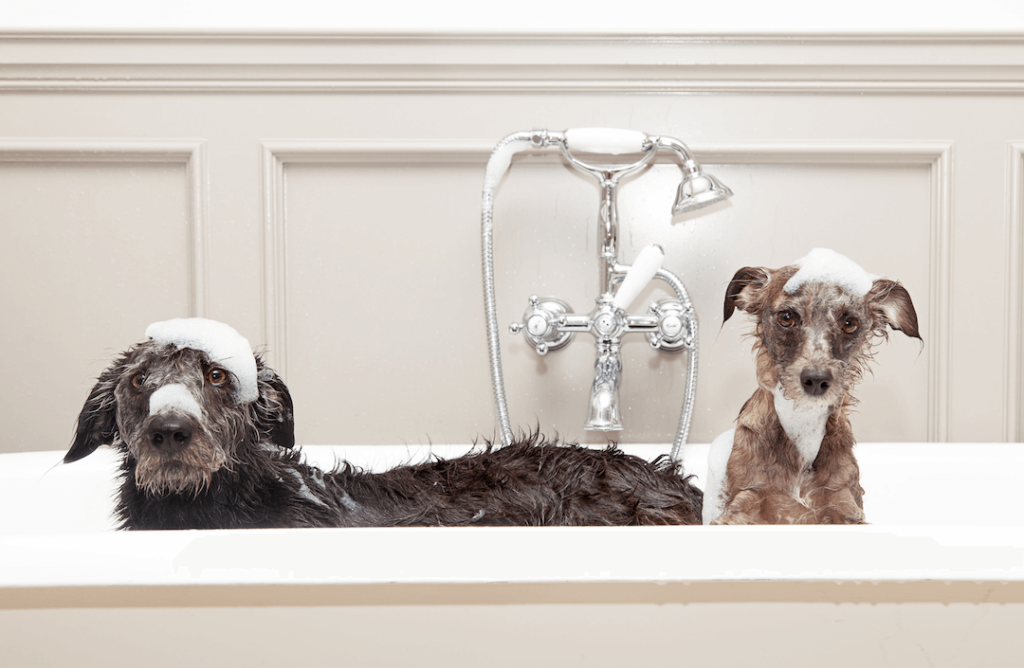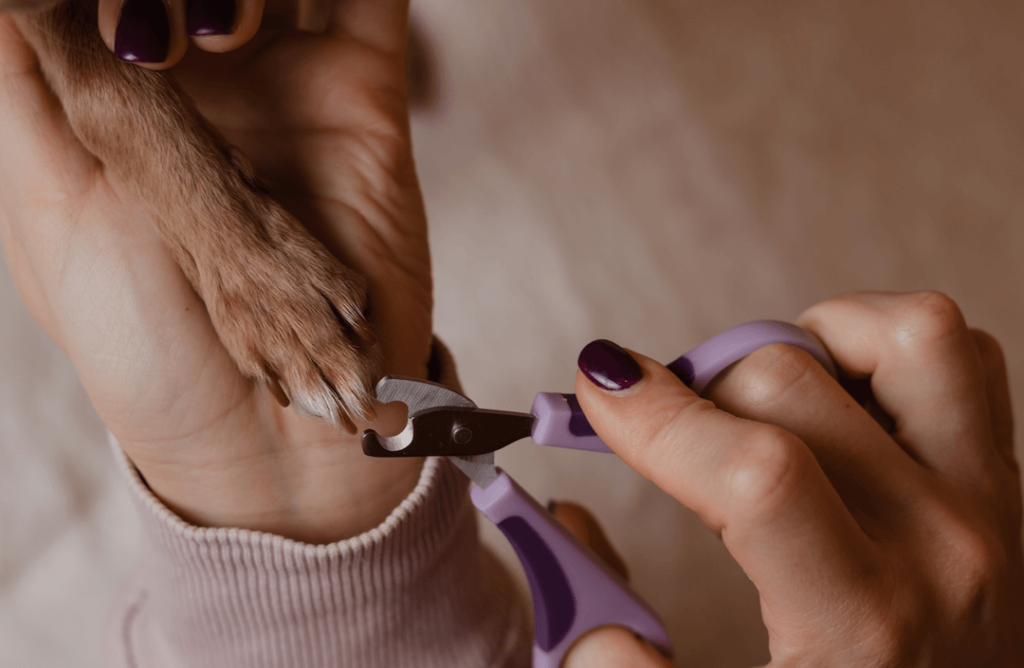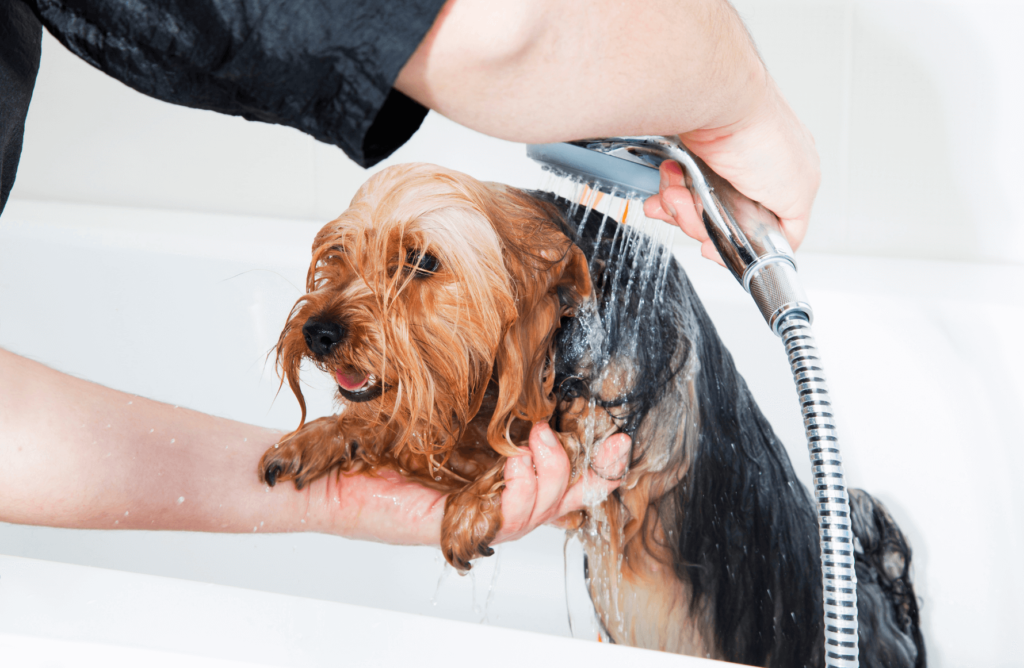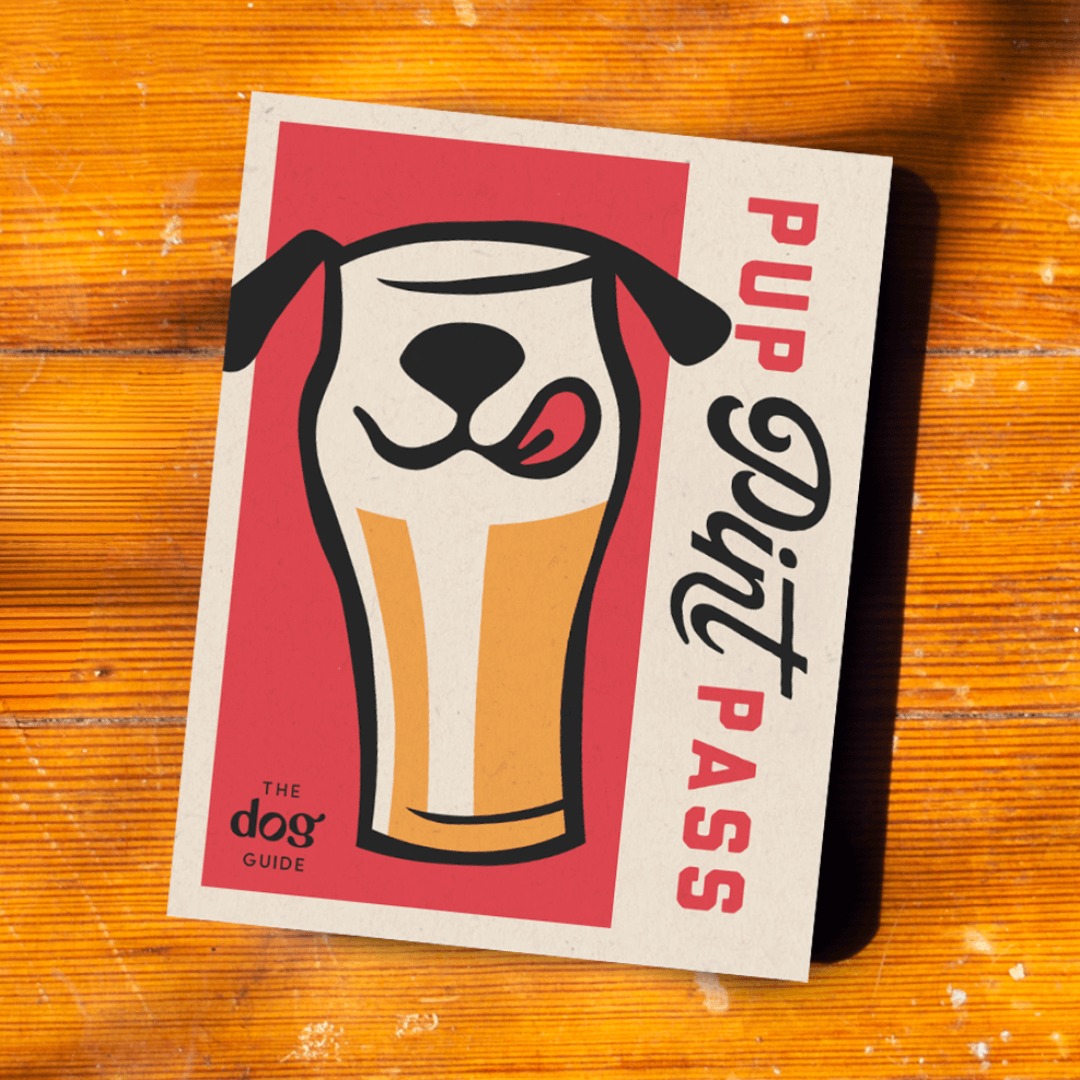
I wish dogs liked “going to the spa” and “getting their nails done” as much as I do. But the truth is many dogs don’t enjoy being handled and groomed especially by people they are less familiar with. Unfortunately, these visits to the groomer or vet don’t get easier. Our dogs don’t “get used to it” the more we take them to the groomer. In fact, the fear, anxiety and unease of grooming will most likely compound and get worse.
Groomers and veterinarians are typically trying to get the job done as quickly as possible, whether to shorten the length of stress time for the dog or to get started on the next appointment. This typically doesn’t leave room for counter conditioning and desensitization. In other words, these professionals are focused on the grooming and examination, not the training involved to help your dog get used to the experience.
Here are some quick words of advice before we get into how to train your pup to be more tolerant of these tasks.
Learn how to do some grooming tasks yourself
I know doing your own pet’s nails can be a bit nerve-wracking, but if you learn how to clip and file your pup’s nails, you can make sure the experience is always an enjoyable one and perform the task in a more comfortable setting.
Stress management remedies could be useful but is not the entire answer
There are a wide range of stress management remedies ranging from over the counter to pharmaceutical solutions. What is best for your dog depends on the intensity of fear and anxiety your dog is experiencing. However, my favorite way to utilize these remedies is in conjunction with a training plan. Simply dosing your dog with a tranquilizer of some sort will not have the same long-term effects as a regular and proper training plan.
Investing in the training plan could have long term benefits
While the training process could be a bit daunting and tedious, it really is worth the investment of your time. Whether you have a young puppy who has a life of grooming and vet trips ahead of them or an older pupper who could use less stress in their life, spending a few moments a week could have a great positive impact.
Do not move forward in the training plan until your dog consistently does not show any negative behaviors (pulling away, growling, attempting to bite, etc.) in your current training step
It can be tempting to move quickly through the process. But moving forward before your dog is ready for the next step could slow or halt your progress. Just a few minutes a few times a week is all you need to make exponential progress.
Every dog will move through the process at a different pace.
Every dog might have varying amounts of fear/anxiety to different parts of the grooming process. Every dog may also be motivated by different things. While you go through your training process you might be able to move through certain steps quickly and other steps more slowly. Remember to pair these training steps with what your dog loves. I recommend using high-value food like cheese, small pieces of hotdogs, etc.
Pair long-lasting yum-yums to build a positive association to the experience, but more importantly, to distract your dog.
Have you seen that hilarious video of the dog mom who wears saran wrap on her forehead and smears peanut butter on her head for her dog to enjoy while she trims her dog’s nails? GENIUS! HERO! You might not need to go to such great lengths, though. Try a Kong filled with peanut butter fresh from the freezer, or a licky mat smeared with some apple sauce. You might be surprised how easy it is to trim a nail or two while your pup is preoccupied.
Dog Grooming Training Tips
Let’s talk about training! There are three trigger categories you want to desensitize your dog to: the tools needed, the handling, and the environmental contexts. With all the training steps, we want to figure out how to “dilute” the trigger enough so your dog doesn’t have a negative reaction. Once they are comfortable at that step, you can move on to the next step. Always pair the triggers with something your dog finds enjoyable.
How to desensitize your pup to handling
- Take your dog for a walk or enjoy a play session. This will tire your pup out a little and hopefully make them more tolerant of the training.
- When your pup lies down and relaxes, touch a body part they don’t mind (maybe their neck or back) and treat. As you do more reps, start working your way down their shoulder, then to their elbows. You eventually want to make your way to their trouble spots—their paws, nails, mouth, etc. Be sure to give lots of treats!
- Stop before your dog reaches a point where they start pulling away. Success happens when there is nothing but positive associations and zero negative behaviors. If your dog flinches, pulls away, or reacts in any sort of way to your touch, you have gone too far.

How desensitize you pup to grooming or examination tools
- Think of an event your dog loves (mealtime, play time, walks, etc.) and have the tool around. I know it may seem silly, but if you grab the nail clippers and then go for a walk, your dog won’t mind you reaching for the clippers. If your tool makes noise, like a rotary nail file, leave the tool on while you walk or your dog enjoys a meal. The tool doesn’t have to be right next to your dog. Maybe it is across the room or even wrapped in a blanket to muffle the sound. With time, the tool can move closer or be less wrapped so the noise gets louder.
- This step should be considered after you have also done some handling training. Now start adding the tool into your handling sessions. While holding your dog’s paw, tap their foot with the nail clippers and treat. When this is not an issue, place your pup’s nail in the nail clipper but don’t actually clip. Give a treat! When your dog is none the wiser and enjoying getting treats, clip a nail, immediately give a treat, then stop the process.
How to desensitize your pup to environmental cues
This step could be tricky depending on what task you are working for. Some vet offices will allow you to sit in an exam room for a few minutes creating a positive association if they don’t need to fill the room with an appointment. You also might not have loud air blowers like the groomer, but your own hair blow dryer might work well, so work with that. If your dog hates baths, maybe feed them their meals or provide them with a tasty licky mat while they stand in a dry bathtub. Whichever factors you can think of and recreate, pair them with treats and yummy snacks to build a better association.
Remember to take the training process slowly. Once you are able to clip a nail or two, always keep the grooming session short and fill with lots of rewards, treats, and praise.


